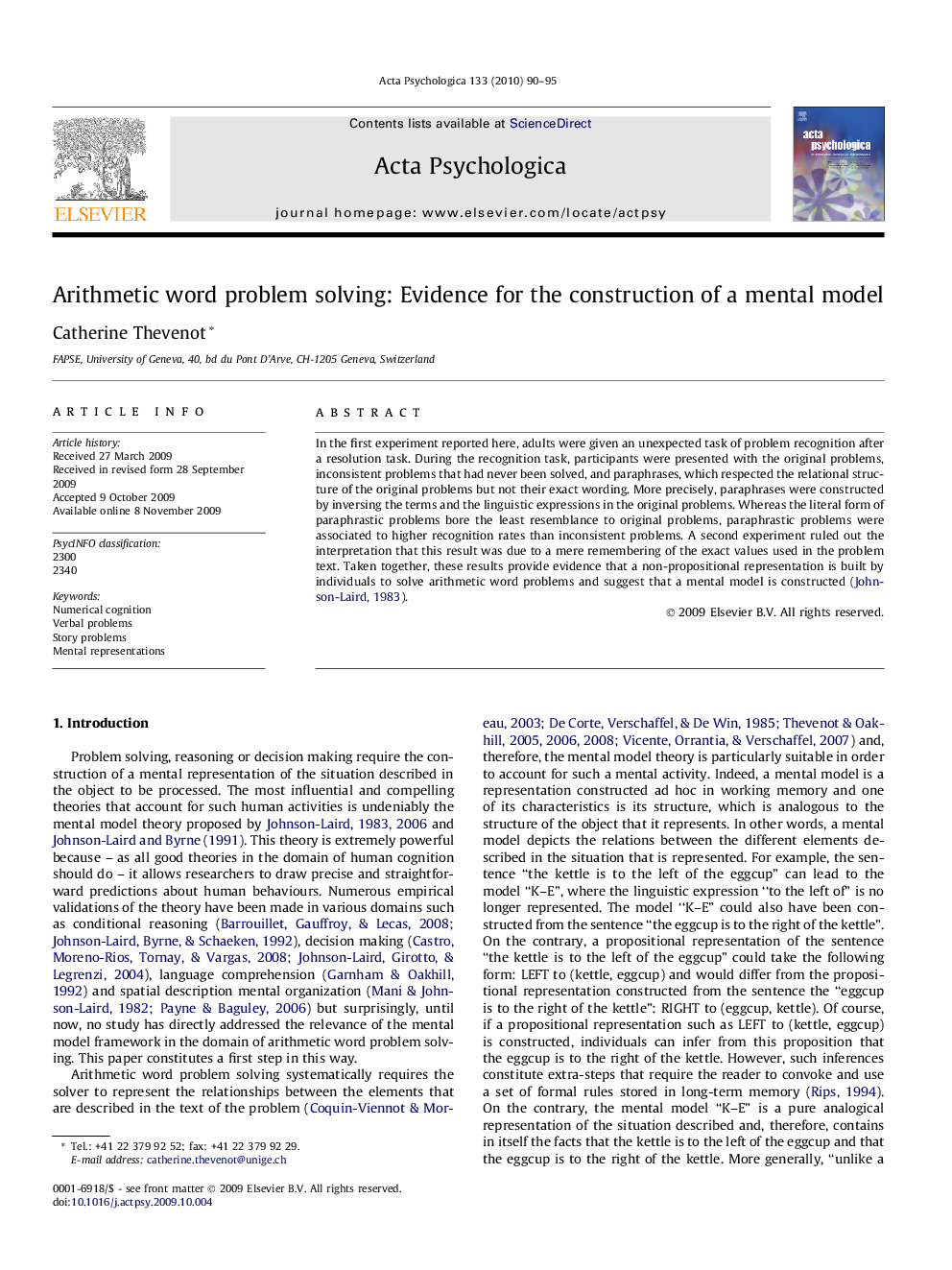| Article ID | Journal | Published Year | Pages | File Type |
|---|---|---|---|---|
| 920210 | Acta Psychologica | 2010 | 6 Pages |
In the first experiment reported here, adults were given an unexpected task of problem recognition after a resolution task. During the recognition task, participants were presented with the original problems, inconsistent problems that had never been solved, and paraphrases, which respected the relational structure of the original problems but not their exact wording. More precisely, paraphrases were constructed by inversing the terms and the linguistic expressions in the original problems. Whereas the literal form of paraphrastic problems bore the least resemblance to original problems, paraphrastic problems were associated to higher recognition rates than inconsistent problems. A second experiment ruled out the interpretation that this result was due to a mere remembering of the exact values used in the problem text. Taken together, these results provide evidence that a non-propositional representation is built by individuals to solve arithmetic word problems and suggest that a mental model is constructed (Johnson-Laird, 1983).
